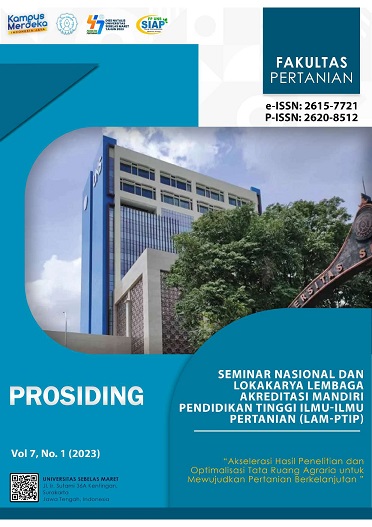Simulasi Hasil Kedelai (Glycine max L. merr) dengan Dua Level Irigasi dan Tujuh Dosis Pupuk Nitrogen pada Kondisi Iklim Lampung Selatan Tahun 2020
Keywords:
soybean, simulation model, climate, irrigation, nitrogen nutrientAbstract
The growth and yield of soybean plants are strongly influenced by environmental
conditions such as climate, nutrients and water. Optimal environmental conditions will produce
maximum growth. Each region has different environmental conditions. South Lampung is one of
the soybean crop development areas. Data on variations in environmental conditions in an area
can be used to simulate the growth and yield of soybean plants. This study aims to simulate the
growth and yield of soybean plants based on climate data in South Lampung. The research was
conducted by collecting climate data from the Meteorology, Climatology and Geophysics Agency's
stations for 2020. Simulations of water supply and nitrogen nutrient doses were entered into the
model to simulate soybean growth and yield. The results of the simulation research show that
differences in planting time, water application and nitrogen dosage greatly affect the growth and
yield of soybean plants. In conditions without irrigation, soybean crop yields are higher in the
rainy season than in the dry season. With the addition of irrigation water, soybean crop yields can
be higher compared to the rainy season. The best irradiation efficiency occurs during the dry
season because it provides a higher increase compared to the rainy season. The application of
nitrogen in irrigated conditions gives a higher increase in yield than without water. The value
validation between the simulation results and the real results shows that the simulation results are
close to the real soybean yield values. The results of this validation indicate that the simulation
model can be used to predict soybean yields in other months.



